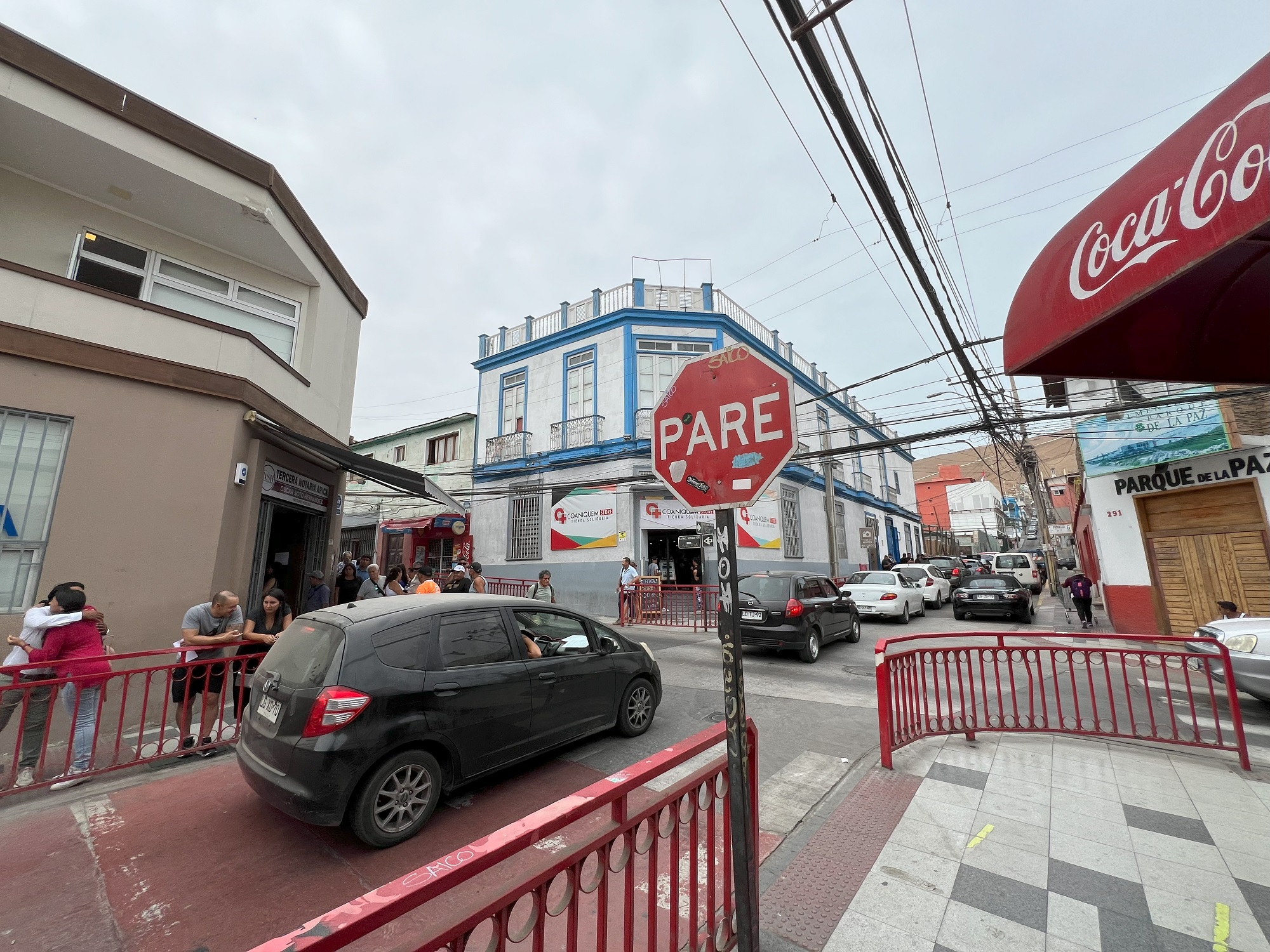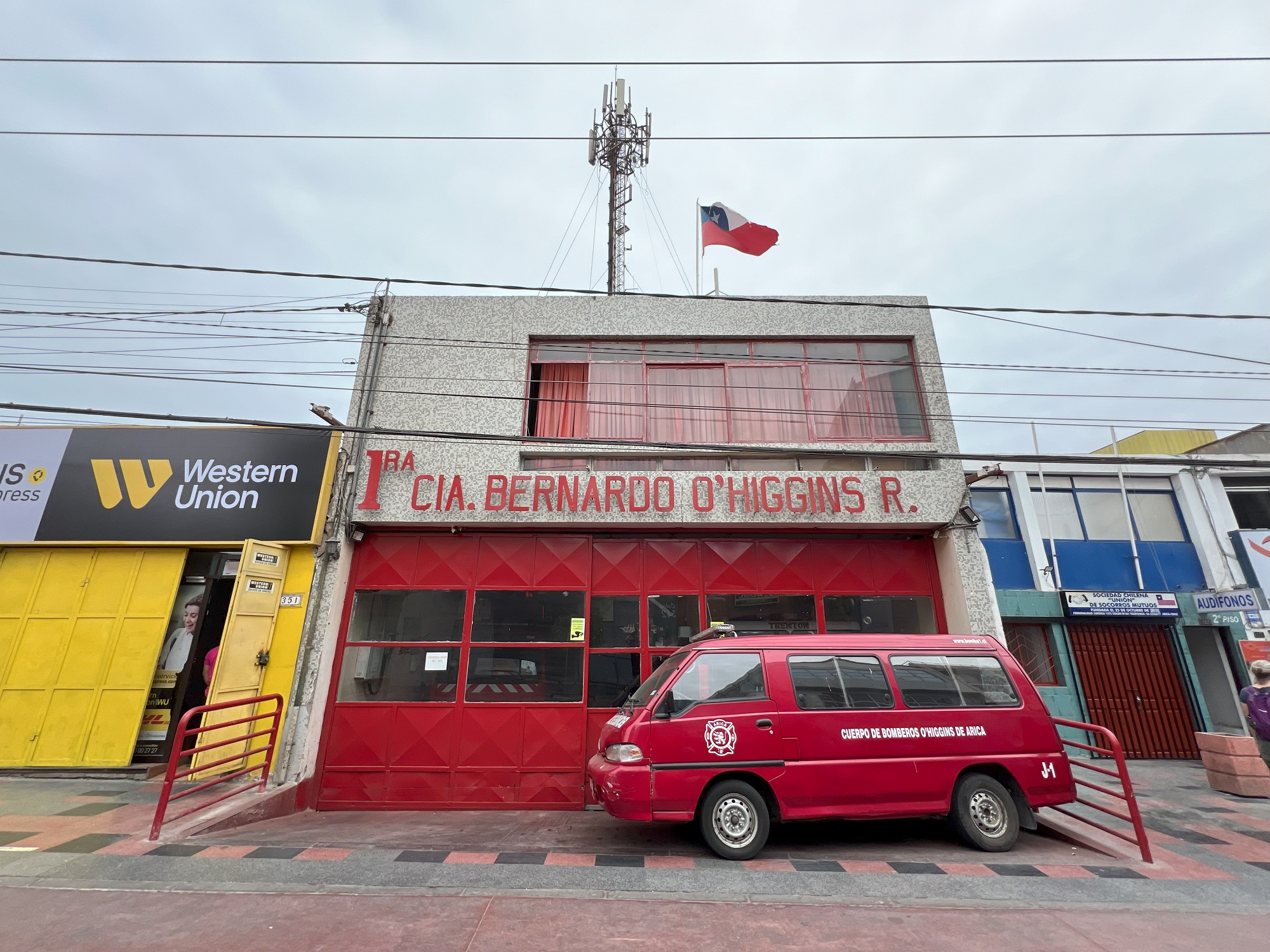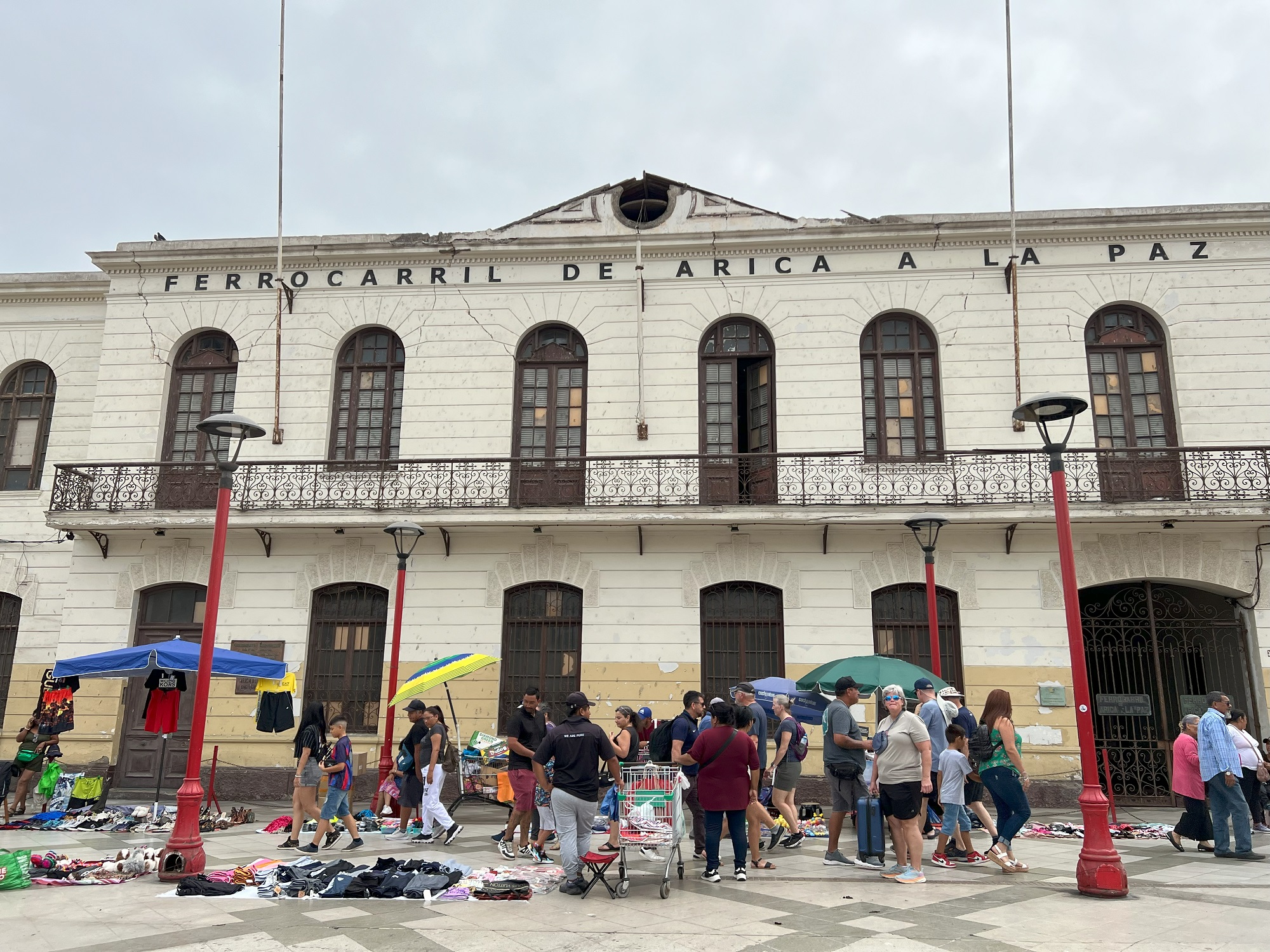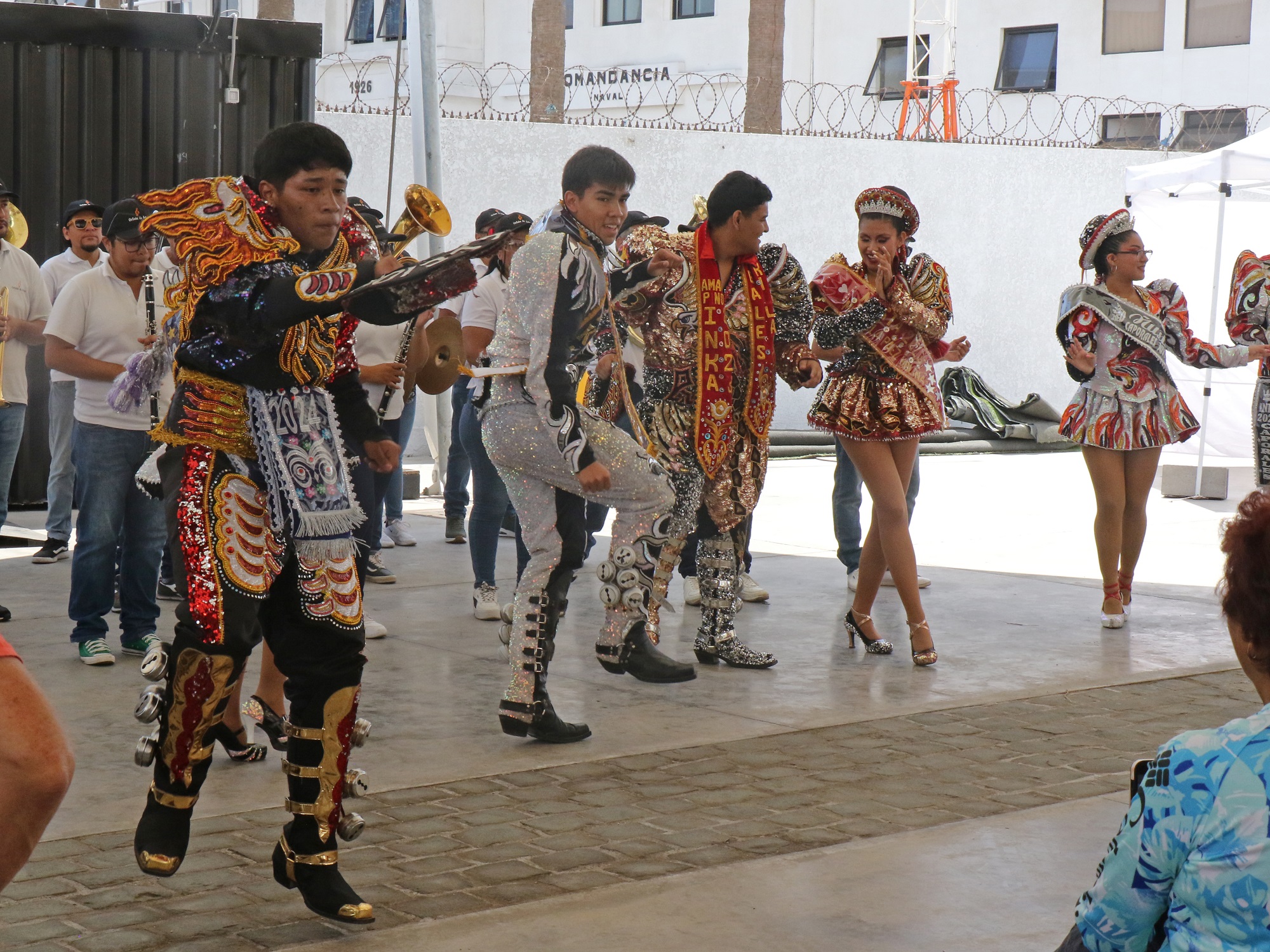Our self-directed excursion into Arica this morning took us up the steep path to the top of the hill called Morro Arrica.
At the top there is an enormous Chilean flag, a museum and a statue called Christ of the Peace (a reference to the Treaty of Lima in 1929 that settled lingering territorial disputes between Peru and Chile).
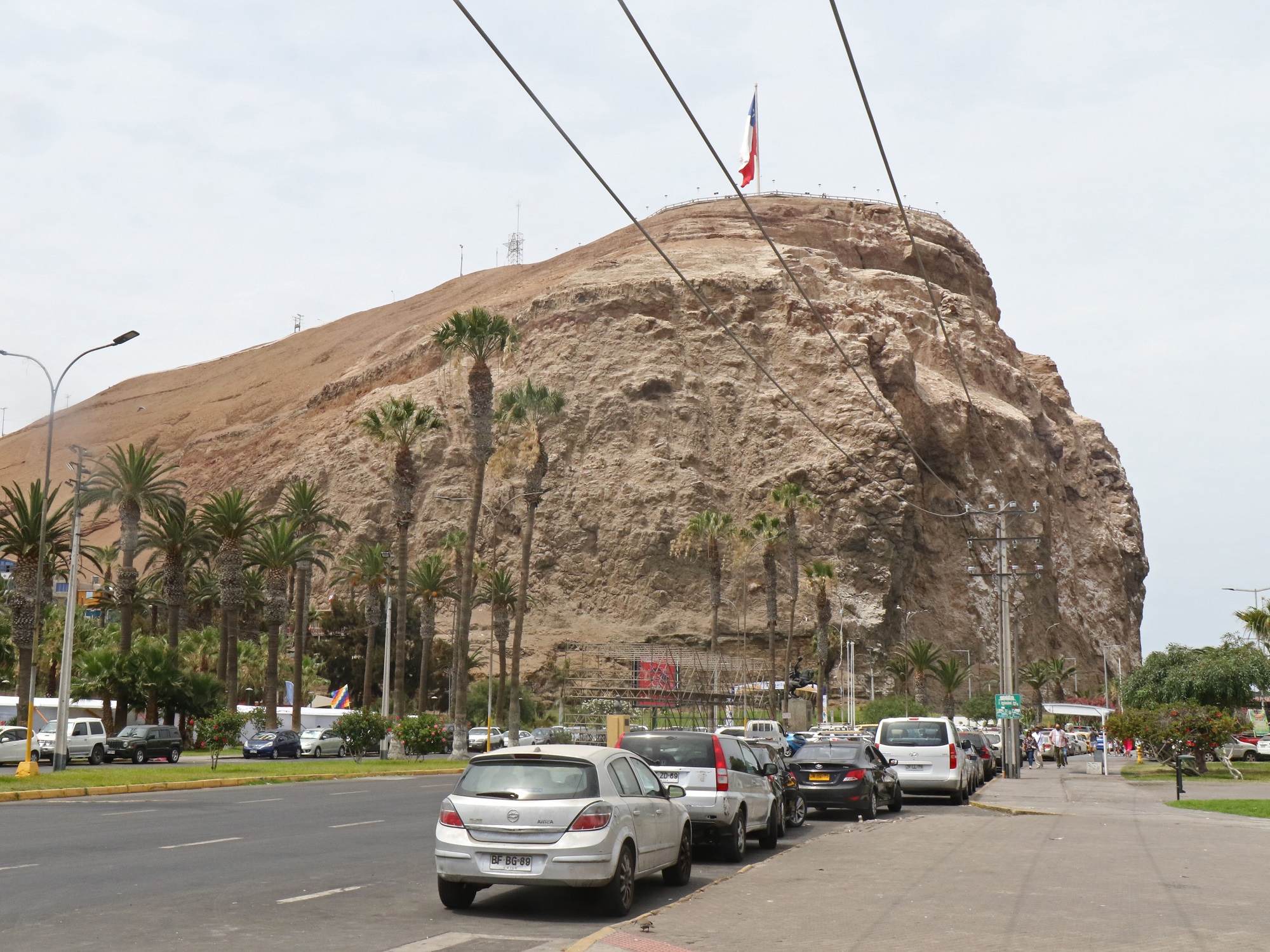
It was the last bulwark of defense for the Peruvian troops who garrisoned the city during the War of the Pacific (1879–1883). Morro de Arica was assaulted and captured on June 7, 1880, by Chilean troops in the last part of the Tacna and Arica campaign.
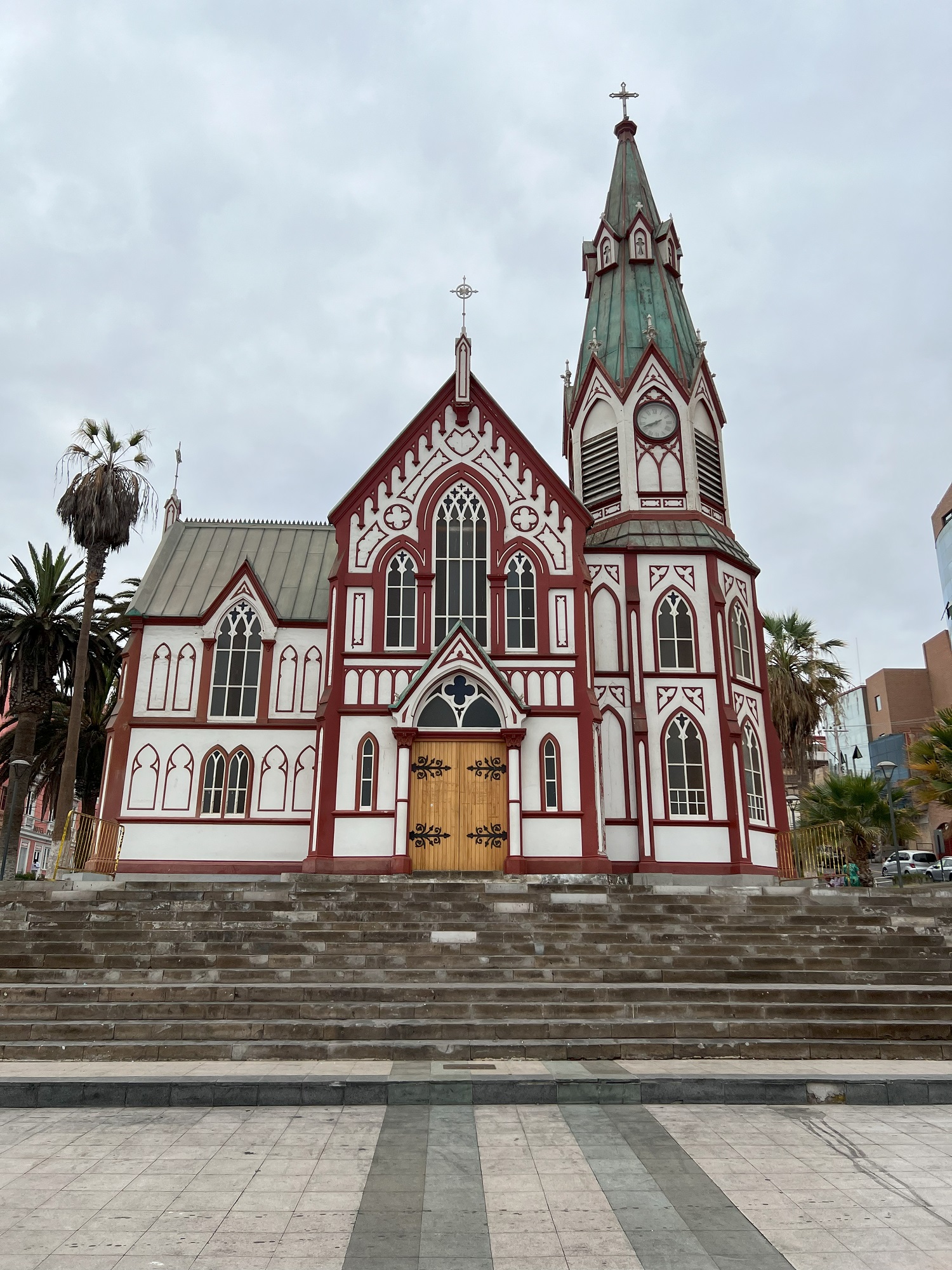
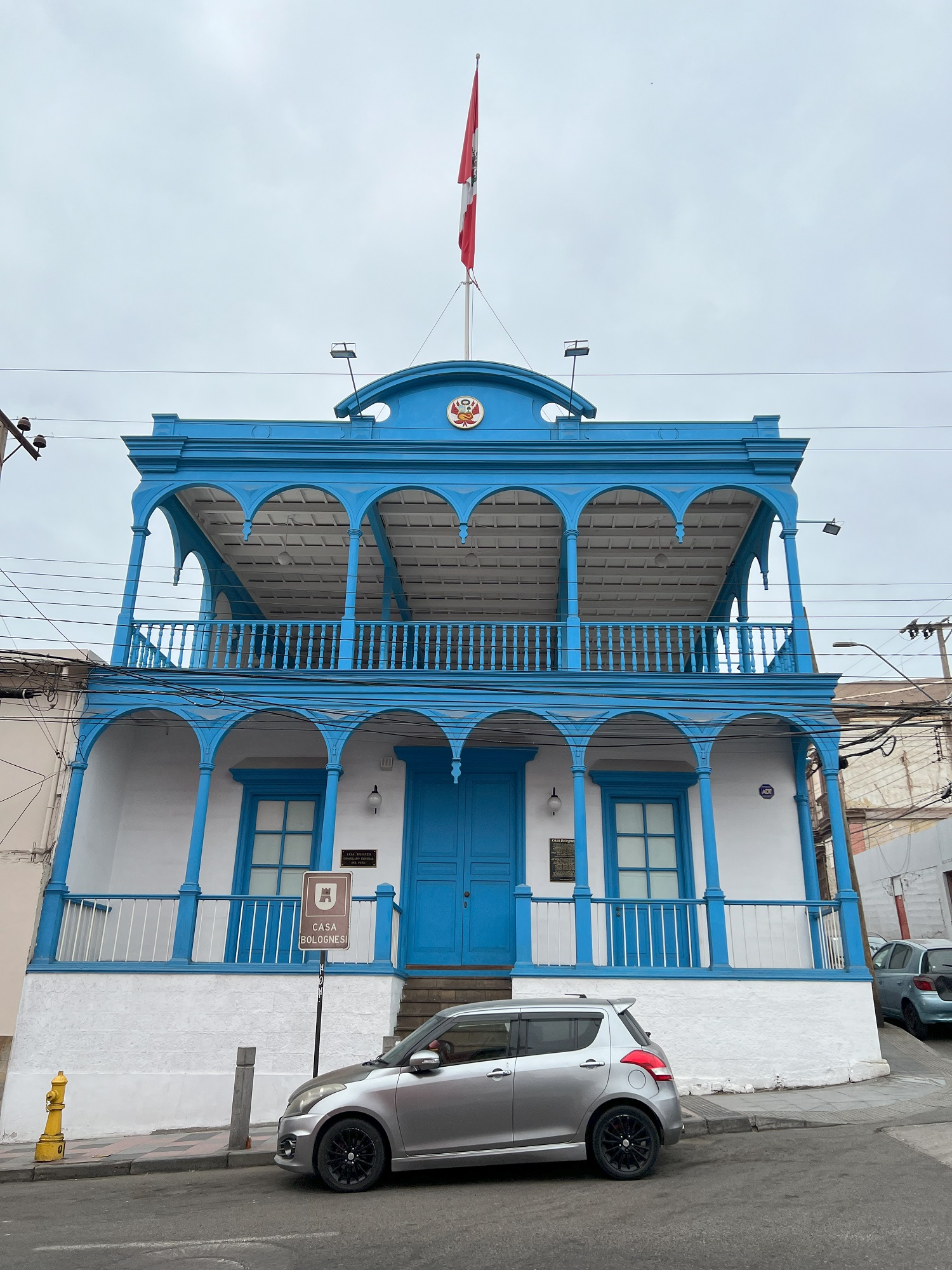
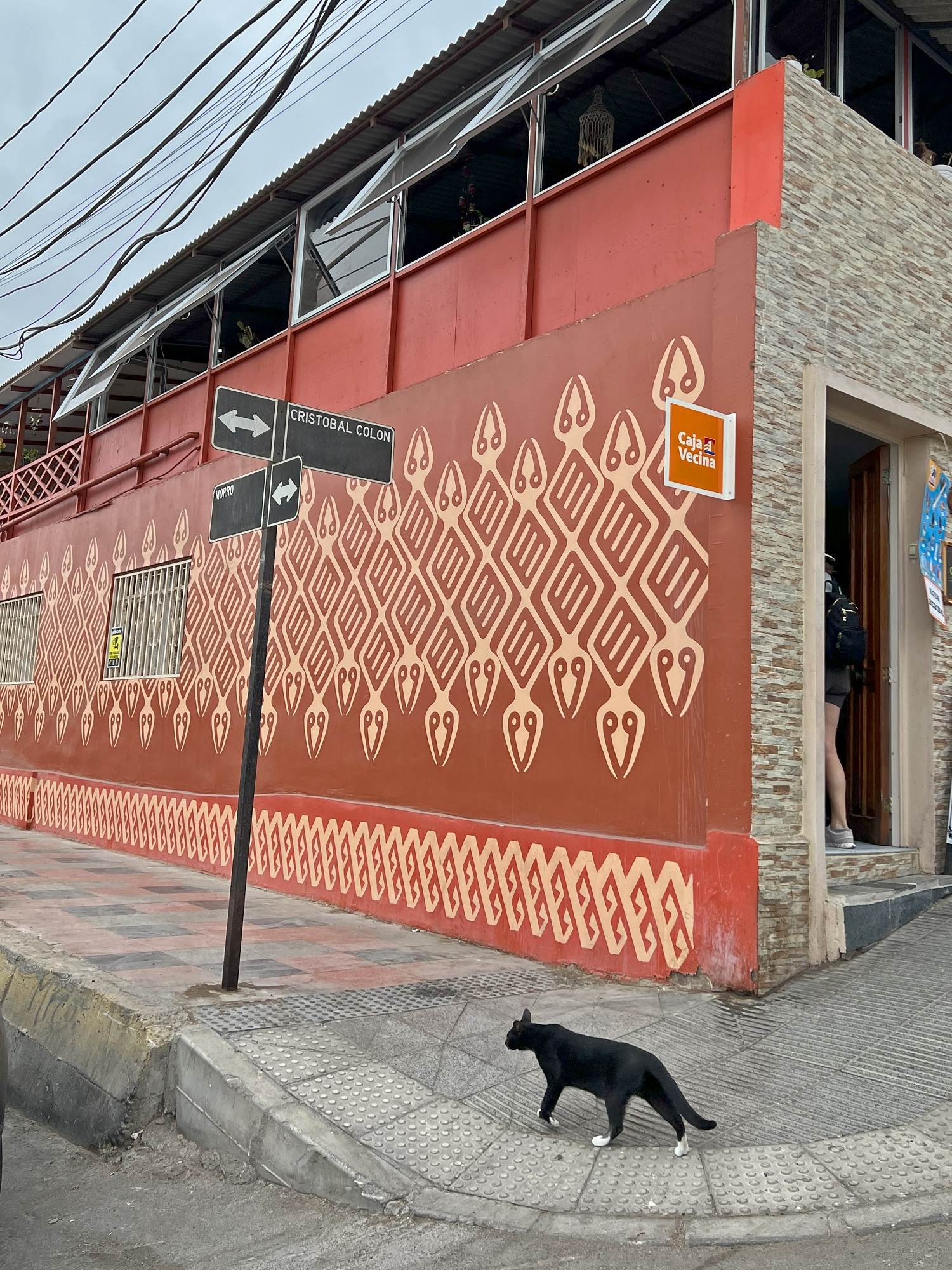
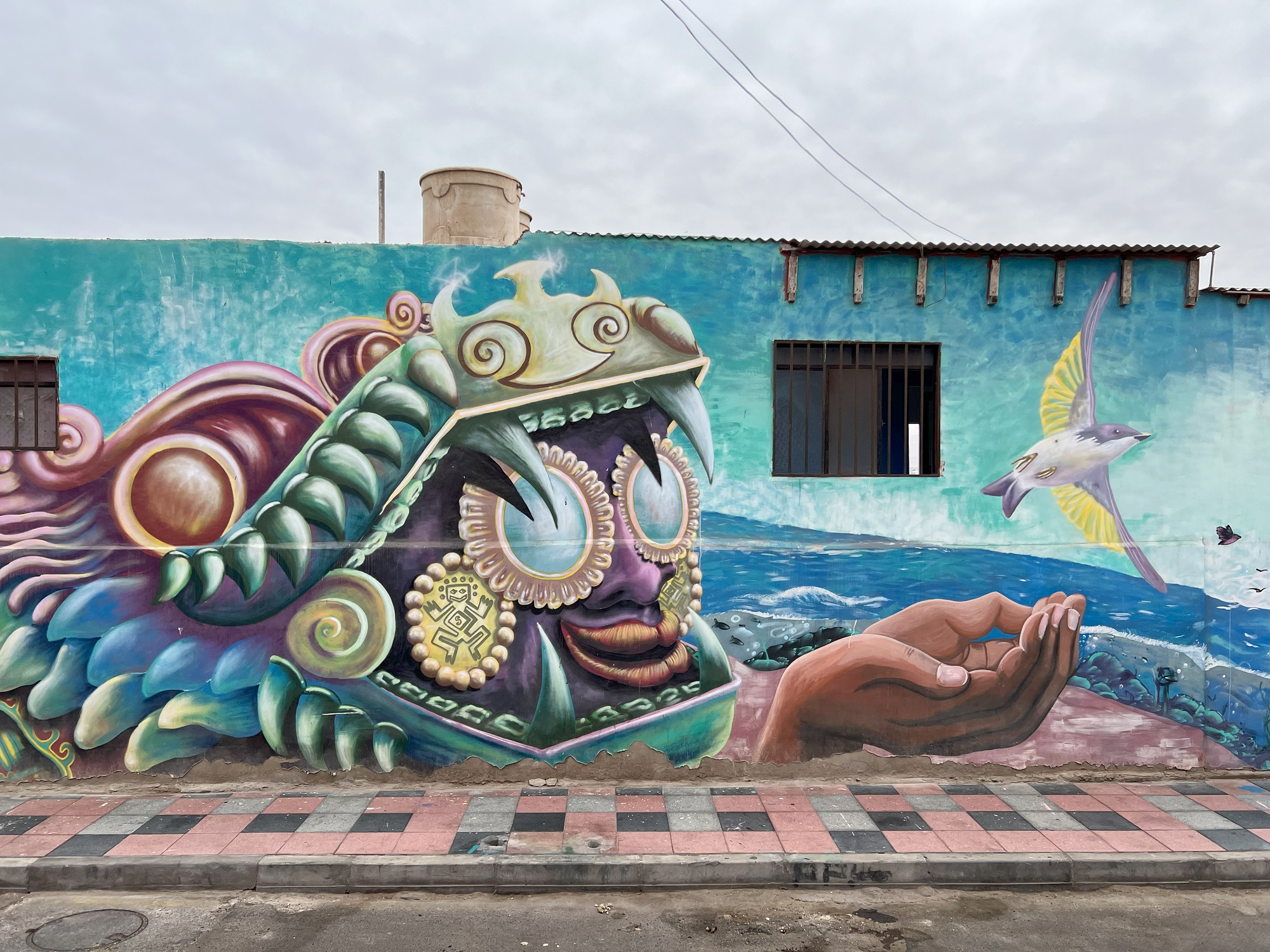
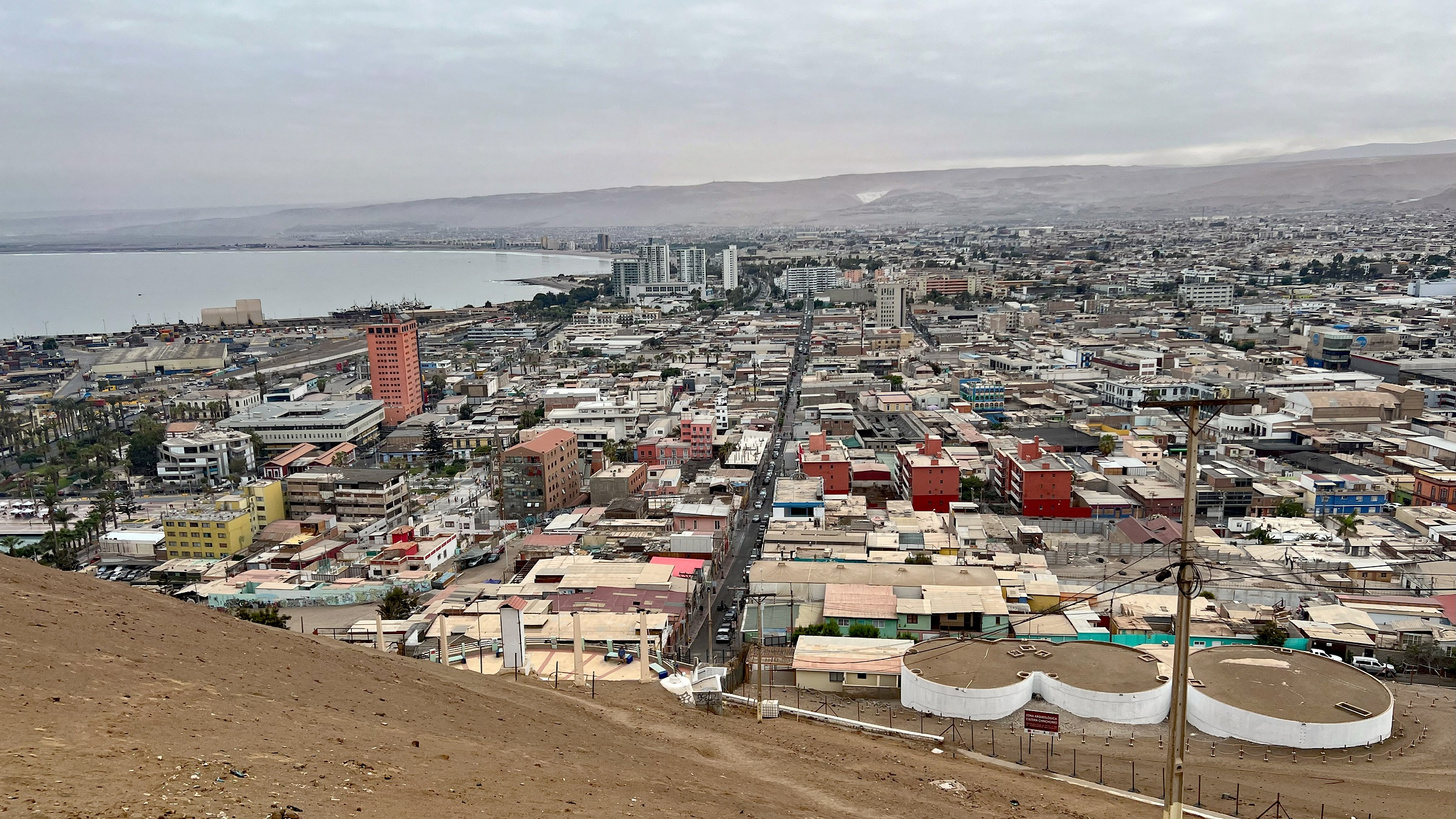
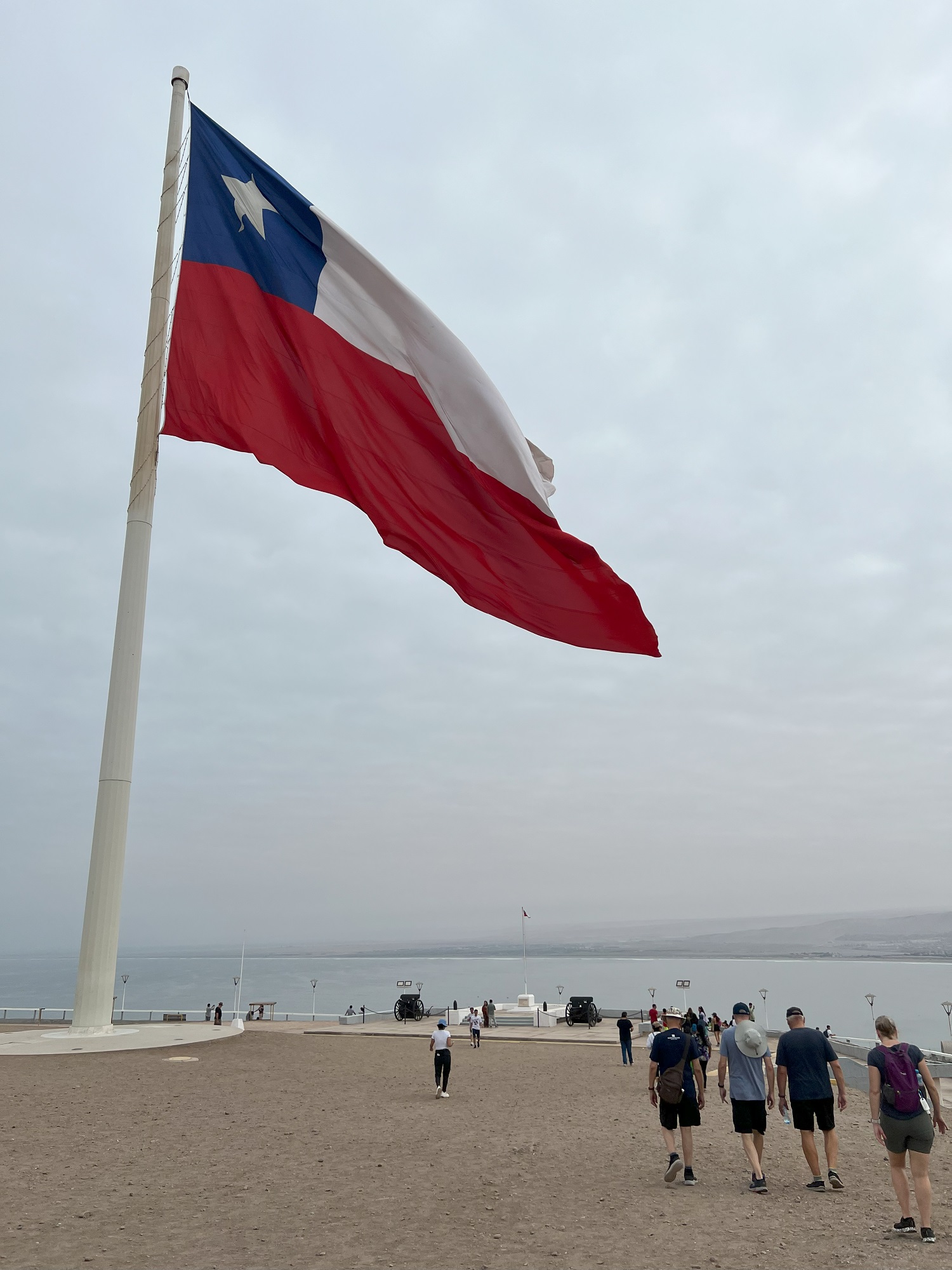
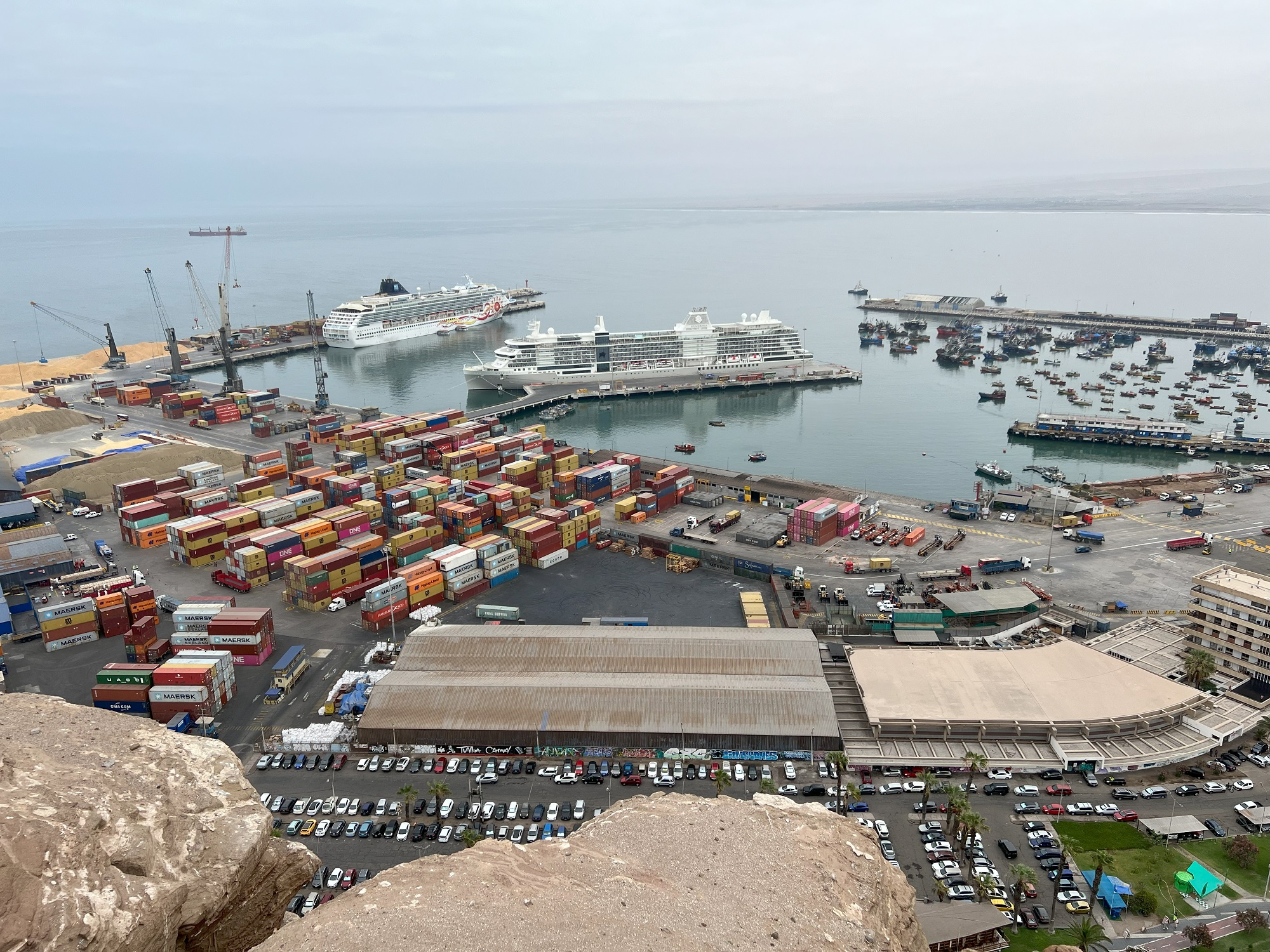
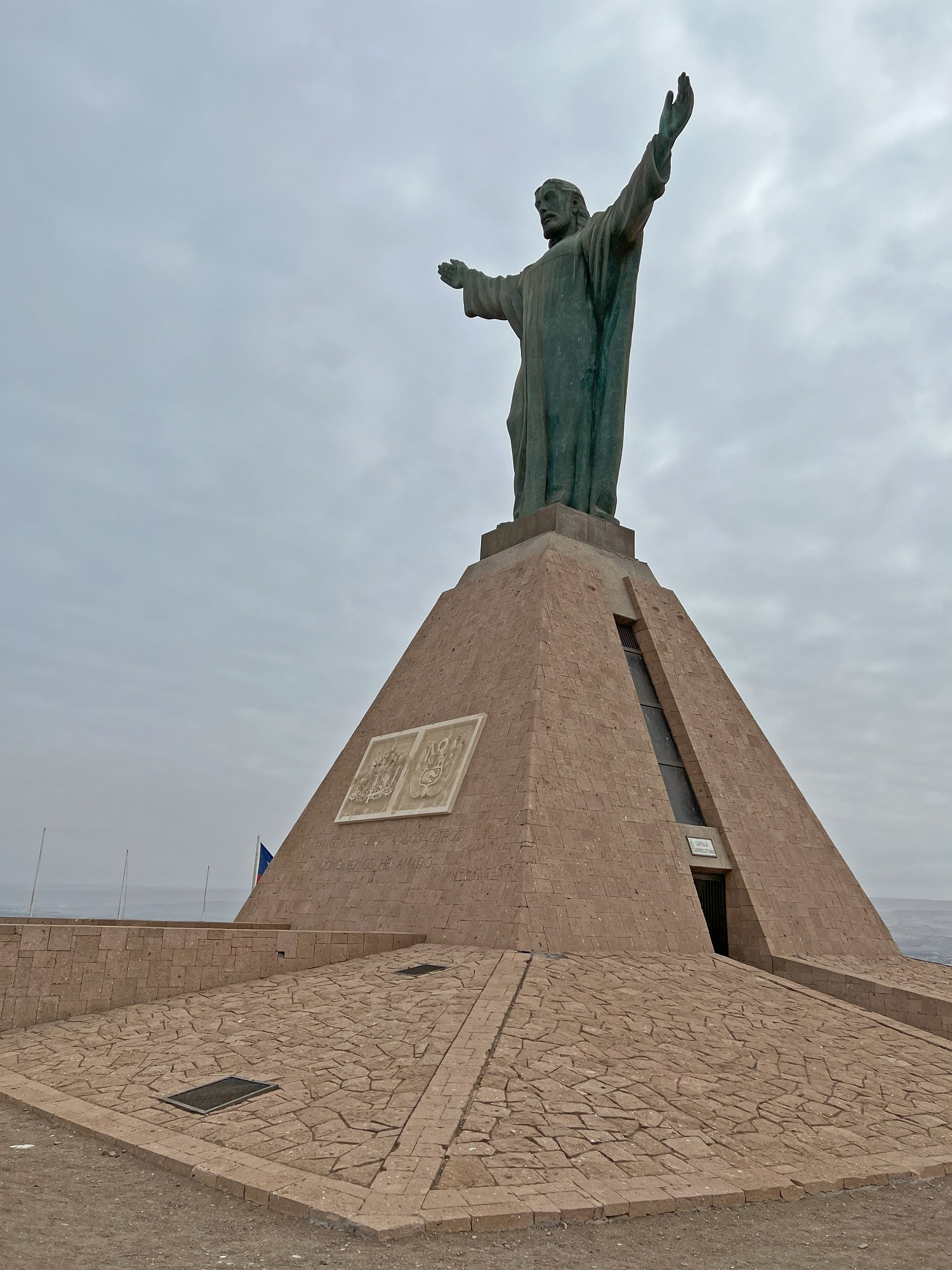
Long after the War of the Pacific ended in 1883, the lingering territorial disputes between Peru and Chile were finally settled by the Treaty of Lima in 1929. In this Tacna-Arica compromise, the city of Arica officially became the northernmost point of Chile. As part of this sign of peace, the Cristo de la Paz statue was designed by Raul Valdivieso in 1987 and then erected in 1999 on Morro de Arica, the scene of the crushing Peruvian defeat in 1880. Also called the Cristo de la Concordia, this steel and bronze statue stands 36 feet on a concrete pedestal. The outstretched hands of Christ measure 33 ft across.
[From encirclephotos.com]
